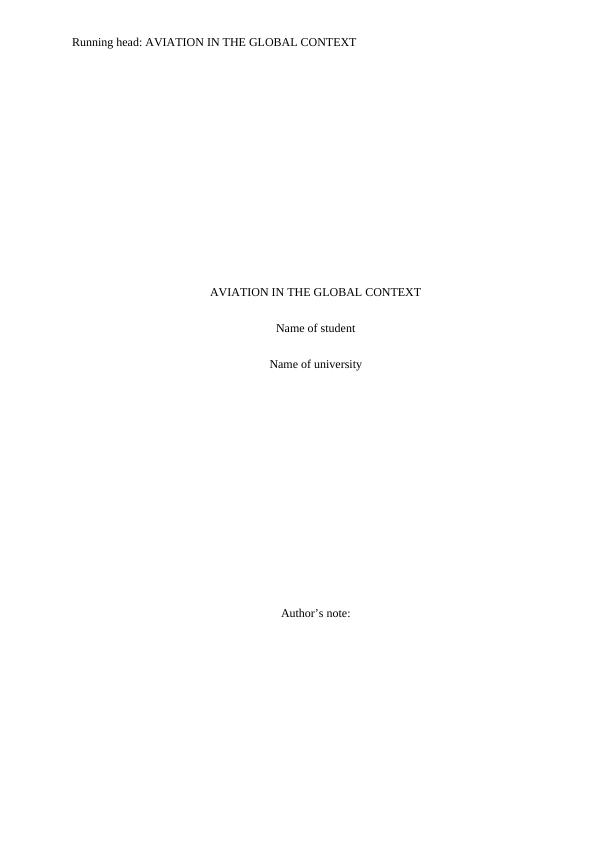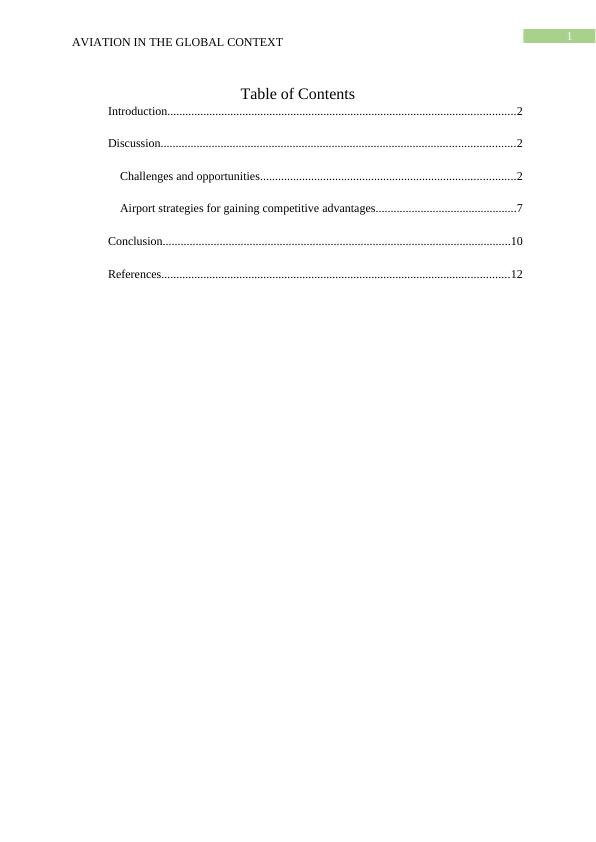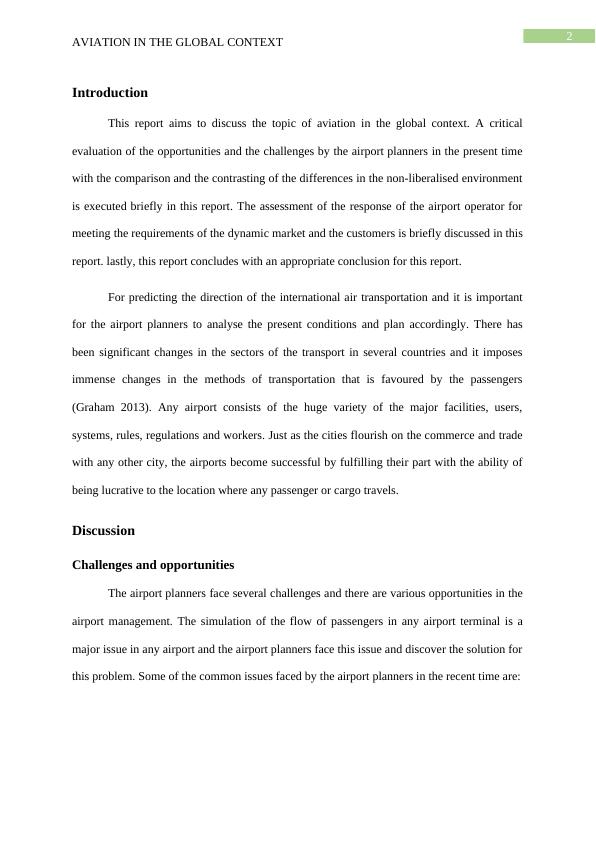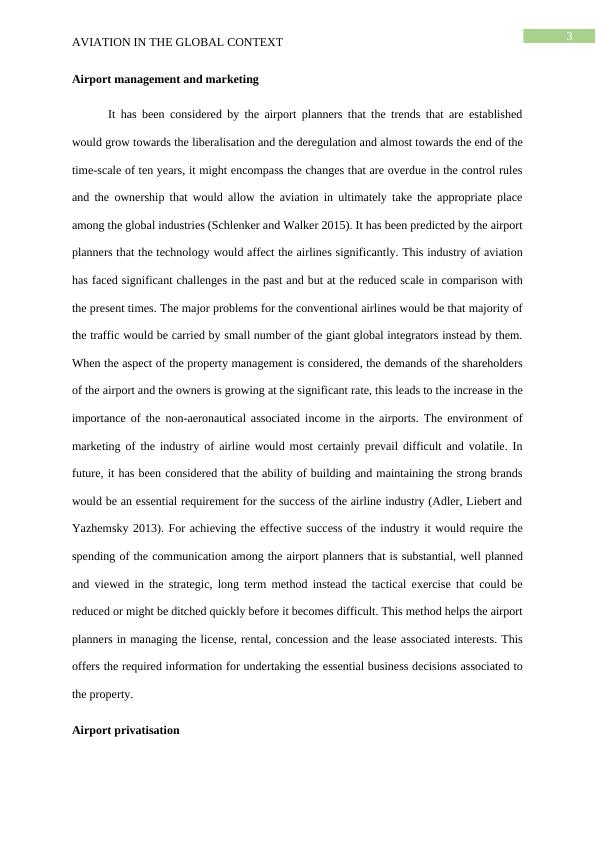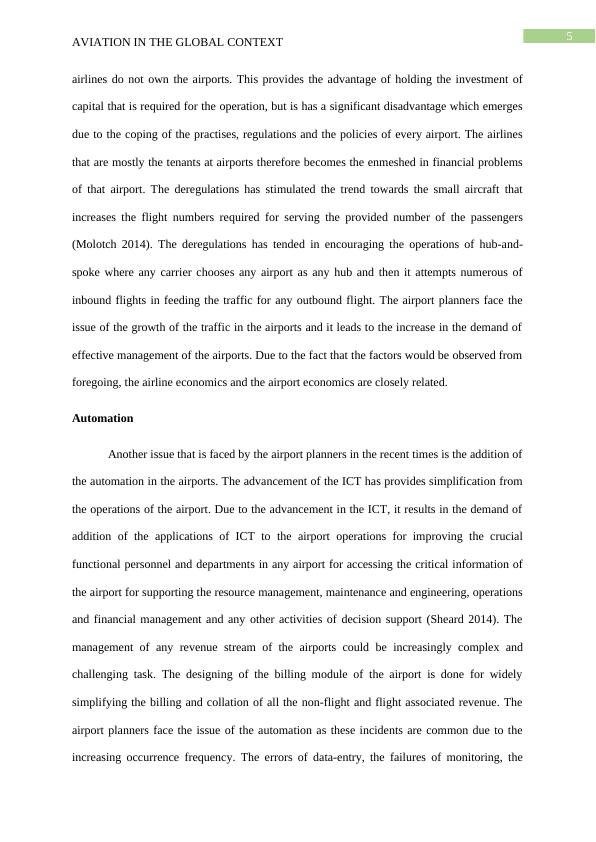Aviation in the Global Context
Write a report critically evaluating the challenges and opportunities faced by airport planners today, contrasting and comparing the differences in a non-liberalised environment, and critically assessing the response of airport operators to the needs of the new market and customers.
22 Pages4343 Words136 Views
Added on 2023-04-19
About This Document
This report discusses the challenges and opportunities in aviation in the global context, including airport strategies for gaining competitive advantages. It also explores the implementation of biometrics, blockchain, artificial intelligence, and robotics in airports.
Aviation in the Global Context
Write a report critically evaluating the challenges and opportunities faced by airport planners today, contrasting and comparing the differences in a non-liberalised environment, and critically assessing the response of airport operators to the needs of the new market and customers.
Added on 2023-04-19
ShareRelated Documents
End of preview
Want to access all the pages? Upload your documents or become a member.
Aviation Management Assignment | Asian Airline
|11
|3072
|138
Impact of COVID-19 on Air Transport Policy & Planning
|10
|3585
|242
Challenges and Opportunities of Brexit for UK Aviation Industry and Growth Slowdown Faced by UK
|11
|4027
|79
Airline Management: Strategies, Business Models, and Pricing Management
|12
|3170
|256
AVIA 472 - Ethical Issues In Aviation Sector
|7
|2420
|48
Growth of Aviation Industry in Hospitality Management
|6
|1426
|21

